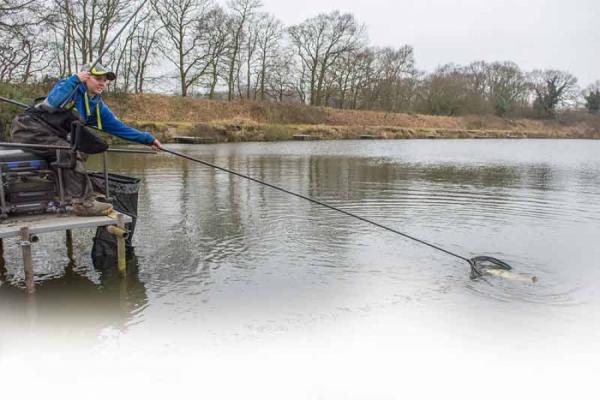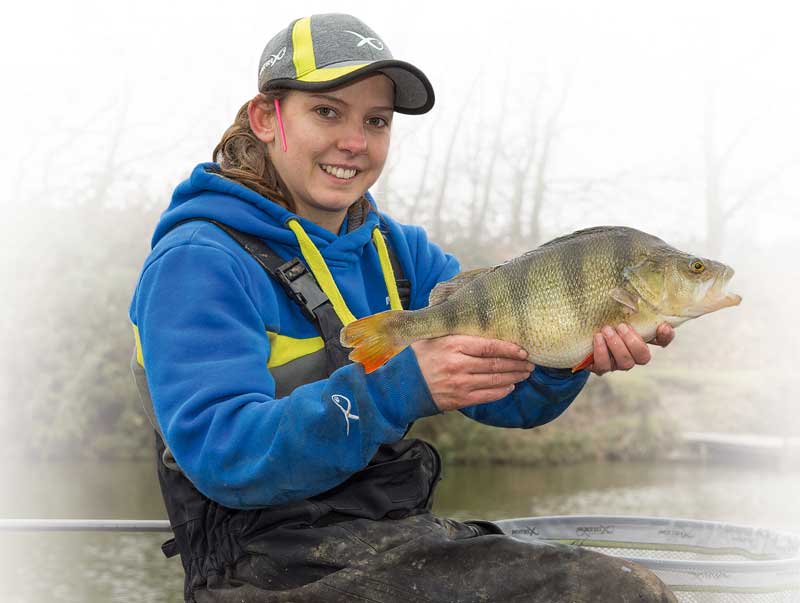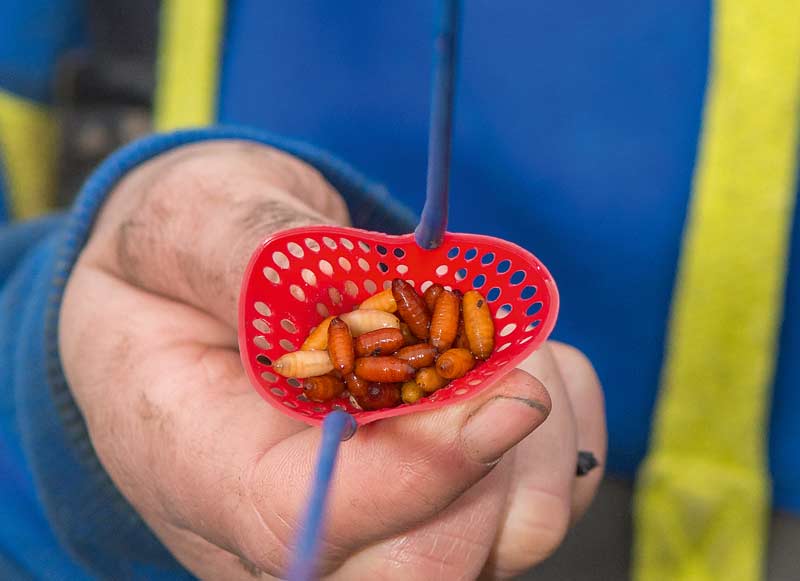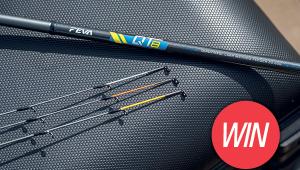Quality Or Quantity

England international Kayleigh Smith thinks that the secret to match-winning success is a balance of both…
Bites or weight, what is more important to you? I know this depends on the style of fishing you do and how seriously you take each session, but for many the tactics we choose are often set by which one of these paths we want to go down.
Do you want to get bites all day and have to work really hard for a match-winning catch, or do you sit it out for a couple of big fish knowing that just a couple of bites could win you the match?
As I do quite a lot of team fishing I often approach a match knowing that putting fish in the net is important; a few extra ounces here and there can make a big difference when just a few points separate the teams at the top. What I have found, though, is that this mentality doesn’t always serve you best when it comes to individual matches. I’m not the type of angler who likes to sit it out for just a couple of bites, but I have had to alter my approach in individual matches to a more positive one.

More and more big perch are starting to appear in commercial fisheries.
Bait Equals Bites
The biggest influence on the number of bites we get, and fish we catch, is our choice of baits. Options like corn or meat will give you fewer bites but a bigger stamp of fish, while maggots and pinkies will get you bites all day long but you’ll need a lot of fish for a match-winning catch.

Casters attract a better stamp of fish.
As I mentioned, I still like to be getting a few bites throughout the session so I went through a stage of fishing maggots, but when it came to framing the lack of bonus fish was leaving me just short on many occasions. A switch to casters in conjunctions with a bit of groundbait and worm suddenly saw me catching a better stamp of fish, and also picking up bonus fish such as small carp, tench, big perch and bream.
The biggest edge I have found is to still feed your swim as you would with maggots – regular feeding and decent amounts – but also make sure you have a bed of bait on the bottom that will hold the bigger fish. What I think happens is that the roach and smaller skimmers are drawn to the loose feed dropping through the water; these smaller fish feeding then attract the curious bigger fish, which once in the swim will soon home in on the bed of bait, mainly the groundbait and worms that you’ve potted in. It’s rare that these bigger fish actually get their heads down in numbers and feed, but rather sit just off the bottom either dropping down to pick up particles or grabbing the casters as they fall to the bottom. This idea of them feeding mainly just off the bottom has a big influence on the rigs I fish.
Cover Your Options
I’ve found that when you’re targeting a variety of species that can all feed in different ways you have to have rigs at your disposal to quickly switch and change as the fish dictate.
When fishing casters and loose feeding over a bed of groundbait and worms, the fish can be at various depths and so the rigs I set up fall into two main categories: on the drop or on the deck.
My on-the-deck rig is used when the fish really do feed well and are feeding positively on the bait on the bottom. I use a 0.6 to 0.8g float, depending on the depth of the water I’m fishing, which is shotted with a simple bulk and two droppers. This rig is fished slightly overdepth to take advantage of those fish that are actively seeking food on the bottom. As it’s heavier it’s also good for the days when you’re catching a lot of smaller fish near the bottom, as it gets your bait to the bottom quickly, which is important when you’re in bagging mode.
The rig I use for the majority of this style of fishing, however, is much lighter and creates a slow, natural fall of your hook bait. I use a 4x12 float with No11 shot strung out and this is fished just touching the bottom. I’ll be constantly letting this fall through the water, lifting and dropping and trying to replicate my loose-fed casters to trigger a bite. The noticeable thing about this rig is that it often picks up a better stamp of fish and more surprise bonus fish than a heavier rig, which is why I use it for a larger percentage of the session.
As I’m looking to catch a variety of species and still land any bigger bonus fish I hook I choose a light but balanced setup. My main line for both rigs is 0.12mm Power Micron to a 0.10mm hooklength. My hook choice is a size 18 Matrix Silver hook to No5 Matrix solid elastic.
Approaching The Session
As I mentioned, I like to put a bed of bait down at the start of the session, which will usually be a couple of balls with worms, maggots and casters in them. After these initial balls it’s very rare I will top up with groundbait unless I’m fishing a really deep swim, most top-ups are done with neat worm, casters and maggots.

Two balls will be enough to kick-start your swim.
The reason I do this is that it spreads the bait around a little bit more and as you’re loose feeding it keeps the fish searching about, looking for food, rather than suddenly trying to concentrate them into a tight ball.
Once I’ve fed the groundbait I then build the swim by regularly feeding casters. The biggest lesson I’ve learnt with this method is not to be shy when it comes to the amount you feed; 20 to 30 casters at a time every few minutes may seem a lot but I’ve found the fish, especially the better stamp fish, respond really well to this positive feeding.

You can feed quite heavily even when the weather is still cool.
You’ll find that the groundbait will bring an initial wave of activity, usually small roach or skimmers, before the swim goes quiet. This is usually a good sign as it generally means that the bigger fish are moving in and pushing the small fish out the swim. By starting on the heavier rig you can maximise this initial burst and quickly put some fish in the net, and then as the bites tail off I take this as a sign to switch to the lighter rig.
Topping up is something that is more of a gut feeling of when to do it. If I stop getting bites I always give my swim five to 10 minutes before topping up, as often a lull in activity can be caused by a carp in the peg and you either catch it or it moves on and the feeding fish return. If after 10 minutes if I’m still not getting any signs I’ll top up the swim with some worms and casters and this usually triggers a pretty immediate response.

Keep the feed going in regularly and better-quality fish will soon move in.
One aspect of this method that I have found interesting is how on certain days what you put on your hook, either worm or caster, can make a huge difference to your catch rate. Single or double caster can be really effective, especially for skimmers, but on certain days when I’ve been struggling, a switch to a tiny worm head can be like flicking a switch in your swim and you can suddenly find yourself catching a fish every drop. A worm head is also a deadly bait for big perch, a species that is becoming more common in commercials, and although it’s hard to target them specifically, they can be great weight boosters when they do show.
Providing you keep the loose feed going through the water as well as your rig you should find that this is a method of fishing that can be really rewarding. You’ll never quite be sure what fish you’ll catch next, from a small roach to a carp or tench, which I always think adds that little bit of excitement to a session. It’s certainly a tactic that is worth keeping in mind the next time you visit a mixed fishery.

A fantastic mixed bag, all thanks to the caster approach.
Like what you see?

Or buy it now
- Log in or register to post comments








